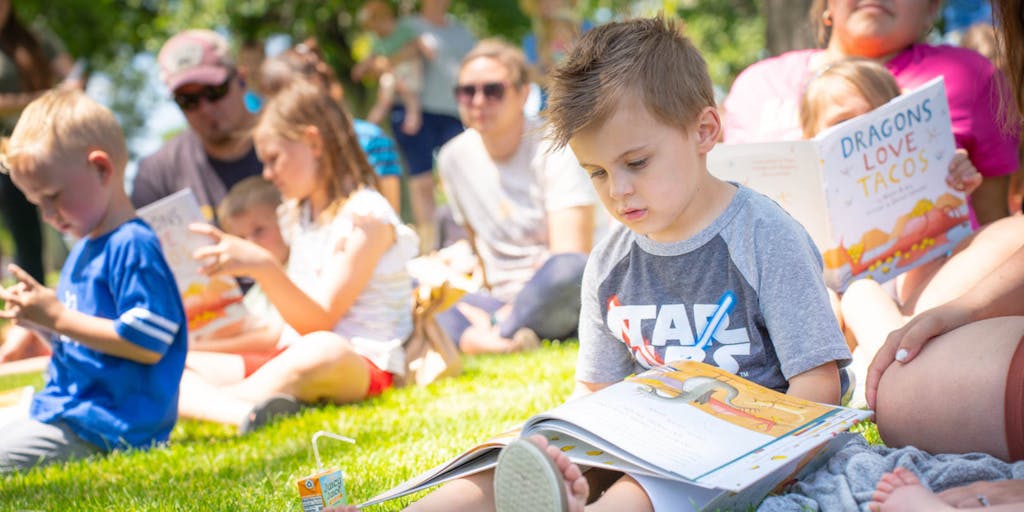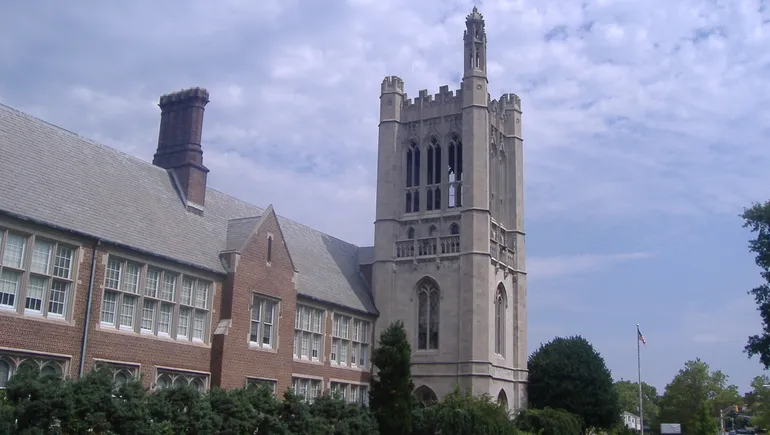In one Idaho town, in the southeastern part of the state, families strive to “read, talk, play” with their children every day while the wider community marches toward its goal of achieving universal preschool.
In another, located outside of Boise, a host of once-unavailable services — a food pantry, a Head Start preschool, a health center, and a migrant family liaison — are now housed under a single roof near the center of town, readily accessible to families in need.
In the northern panhandle, where early learning programs tend to operate in isolation, providers are convening in person and online to share ideas, participate in training and build connections.
These are among the dozens of tailor-made programs, called “early learning collaboratives,” that have sprung up in communities all across Idaho in recent years. It’s part of a coordinated yet bottom-up approach, fueled by early learning advocates but led by locals, to build a system of early care and education in a state where it would not otherwise exist.
Idaho is one of the last remaining states that does not provide any funding for public preschool. In fact, it is unconstitutional for K-12 schools there to spend their state funding on children under age 5.
Even as many states, including politically conservative ones, have begun to invest in early learning, Idaho has resisted, with some far-right lawmakers arguing that more government intervention in education would only harm children and erode “traditional” values including the nuclear family.
Yet that doesn’t reflect the reality of Idahoans. More than half of children under age 6 require some sort of care arrangement because their parents work. And an estimated 28 percent of families need child care but can’t access it, a gap that prevents some parents from working and bolstering the economic well-being of their families. (It’s estimated that Idaho’s economy misses out on nearly half-a-billion dollars annually due to its inadequate child care infrastructure.)
Since neither the federal government nor the state of Idaho are stepping in to support young children and families, despite this tremendous need, early learning advocates across the state have organized a patchwork of local programs that simultaneously solve the problems communities are facing right now while also generating support for future endeavors. Other red states have adopted the collaborative model, but Idaho’s approach is unique in that it lacks funding from the state.
The success of locally devised early learning solutions in the Gem State, advocates believe, could serve as a roadmap for other parts of the country where elected leaders decline to invest in early care and education.
‘Community Spirit Trumps Anyone’s Political Agenda’
The first of the collaboratives launched in 2018.
Leaders at the Idaho Association for the Education of Young Children, a nonprofit advocacy group, were not making progress persuading lawmakers at the statehouse. Yet they knew that children were struggling, showing up to kindergarten having missed all sorts of academic and developmental milestones and expected to somehow catch up. Low-income families, meanwhile, were being crushed by the cost of care and the lack of high-quality options.
Beth Oppenheimer, executive director of Idaho AEYC, believed that Idahoans needed support. She and her colleagues had the idea to go ahead and start providing it to families, with or without backing from state leaders.
“Let’s start building a system. Let’s just start to do something,” Oppenheimer remembers thinking.
With a grant from the W.K. Kellogg Foundation, Idaho AEYC funded the creation of 10 early learning collaboratives across the state, with a goal of increasing access to high-quality, affordable early care and education opportunities. Those programs would bring together local leaders in the education, business and nonprofit sectors, as well as parents and community members, to ask: What problem are we trying to solve in early childhood, right here where we live?
In the five years since its inception, the program has grown from 10 local collaboratives to 25. Many have been established in deep-red, rural communities represented by some of the same state lawmakers who have been vocally opposed to early learning investments.
But that’s the beauty of bringing neighbors together to create their own solutions, backers say.
Tennille Call, interim director of education at the United Way of Southeastern Idaho, a nonprofit that serves as a backbone support for collaboratives in the region, notes that conservatives — of which Idaho has many — love to champion local control of policies and programs rather than state or federal mandates. “This is local control,” she says of the collaborative model.
In the small agricultural town of American Falls, it was the district superintendent who promoted the message of “read, talk, play” that has caught on widely with families, making early learning a point of pride.
“Here, the community can get behind it because it’s a community thing,” Call says of American Falls. “Community spirit trumps anyone’s political agenda.”
Read about how American Falls, a one-stoplight farming community in conservative Idaho, embraced a goal that backers describe as progressive: universal preschool.
Martin Balben, the early learning collaborative project director for Idaho AEYC, says the uptake of the local collaboratives, as well as the scale and strength of them, underscores the desperation so many families feel.
“The story here,” Balben says, “is that the need is so great for investment in early childhood education, particularly birth through age 5, that locals are continuing to ignore the culture wars in Idaho.”
Heather Lee, who is the director of operations for the early learning collaborative project at Idaho AEYC, notes that parents’ desire for their children to thrive transcends ideology.
“You don’t hear bitter partisanship” from families the way you do at the state Capitol, Lee says. “You hear stories of struggle.”
Inherent in the model is an understanding that a one-size-fits-all approach won’t work in a state as geographically, politically, religiously and culturally diverse as Idaho, which runs nearly 500 miles from its tip at the Canadian border to its base abutting Nevada and Utah.
Cathy Kowalski, owner and director of The Learning Garden, an early learning program in Post Falls, a small city in northern Idaho, feels that the community-driven nature of these efforts honors the uniqueness of each region in the state.
“Our communities are so different. It’s hard for individuals in Boise to truly understand what’s going on in North Idaho,” Kowalski shares. “That’s what I love about the early learning collaboratives — we’re bringing it back to local.”
Playing the Long Game, With Short-Term Results
Idaho didn’t invent the idea of local early learning collaboratives. Mississippi has used the model for a decade. Arkansas is launching a similar program.
The difference is those states fund their collaboratives.
“We’re having to do it in reverse,” says Oppenheimer. “We’re having to build the system for the state to fund, whereas the other states figured out how to build the system and fund it at the same time.”
For now, the experiment is working. Every day, thousands of families across Idaho benefit from the programs that have been created in their communities.
In American Falls, families have become more involved in their children’s learning and development. That includes dads, who proponents say are noticeably more engaged in raising their kids than fathers in the region used to be. About three-quarters of the town’s 3- and 4-year-olds are enrolled in high-quality preschool now, compared to about a quarter five years ago. Tests measuring children’s early literacy rates have continually improved since the collaborative’s launch.
In North Idaho, a five-county region where child care is as hard for families to afford as it is for them to find, child care scholarships have helped more than 500 families pay for their children’s care in just the last two years. Many of the recipients are single parents who work full time.
“When I saw that we were awarded the scholarship … a huge weight was lifted off my shoulders,” one parent told the leaders of the North Idaho collaborative. “I went from constantly wondering how I was going to be able to keep up with providing for my family to knowing that we were going to be OK.”
“Having a few extra hundred dollars in our bank account has made a world of difference in what we can provide for our children,” the parent shared.
Longer term, Oppenheimer hopes that the collaboratives’ success will be undeniable, and that if locals and early learning advocates build the system, the funding — and with it, sustainability — will follow.
“Our goal is not to fund this forever,” Oppenheimer says of Idaho AEYC. “We’re a nonprofit. We can’t be responsible for funding early childhood education in Idaho.”
That future funding doesn’t have to come from the state, although that would be a welcome surprise to early learning advocates. It could come from businesses, too, or public-private partnerships.
Already, some collaboratives are so deeply rooted in their communities that if Oppenheimer’s group were to disappear, she says, those programs would continue.
In American Falls, a number of businesses have sponsored the community’s early learning programming. A car dealership in town covered the costs of a family game night once, and a local hospital provided materials for another family engagement event.
Lamb Weston, a major potato producer based in Idaho, operates a processing plant in American Falls. The company has joined the local collaborative and has helped fund scholarships to expand preschool access for children in town.
“Businesses like to fund things in their backyard, especially in rural Idaho,” Oppenheimer says.
But it’s more than just charity for companies like Lamb Weston, she adds: “They’ve noticed that employees aren’t calling out sick as often because they have child care. They have more people that are going to work every day that want to work. Their employee base in American Falls has been consistent and thriving.”
Though American Falls is the “gold star” of Idaho’s collaborative model, as Oppenheimer puts it, other towns are not far behind. Their programs’ existence — not to mention their success — proves that local, homegrown efforts can be an avenue for building early care and education infrastructure despite a dearth of government support.
“It’s hard,” Oppenheimer says, “and you have to play the long game. But we’re in it for the long game.”





















Discussion about this post